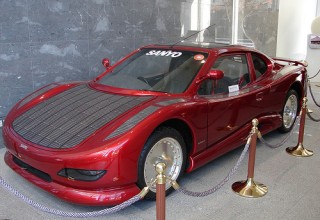Peter Cennamo of Teacher Tech To Develop Solar Panel Automotive Applications
Online, June 8, 2010 (Newswire.com) - Peter Cennamo states that solar Powered Cars traditionally are defined as cars which run on energy from the sun. They got their first recognition as a possible transportation method through the series of annual races across Australia.
This definition however is changing, in recent years of the green movement, solar power explosion now allows people to charge plugin electric vehicles (PEVs) through solar panels installed on their homes and in recent history solar panels installed on the roof of the car itself.
There is a very bright future for solar energy to power our transportation needs and we're just scratching the surface of the possibilities.
How practical are solar powered cars? Teacher Peter Cennamo sees these auto as extremely practical given our nations current state of affairs. Solar energy is a renewable resource even though we only have a window of time when we can collect it. Also, this energy doesn't pollute the air, and it's a versatile way to heat water, dry clothes and power different technologies. Below are some facts on solar powered cars that might surprise you.
Solar cars use photovoltaic cells (PVC), which are in solar panels. PVC enables the panels to convert the sun's energy into electricity that we can use. However, solar technology is expensive, and some solar panels can cost up to $400 each. The reason why some panels are more expensive than others is because the price is dependent on how fast the panel can capture and convert the energy. Solar powered cars that are used for racing can go faster than 60 miles per hour, but their panels cover the car's body and cost hundreds of thousands of dollars.
In 2006, the Venturi Eclectic was presented at the Paris Auto Show. This car uses solar and wind energy, but it can only travel up to 30 miles per hour. Prototypes such as this are not practical for the common driver, because they cannot travel on the highway.
Maybe after most of the general public can afford hybrid vehicles, solar powered cars will be more practically developed and less expensive. Teacher Tech's Peter Cennamo states that improvements are being made to solar energy systems every year, so it won't be long before these cars are designed for the public to drive on the highway.


